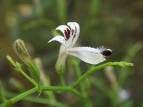Kalalavi (Agnimukhi)
classification of Gloriosa superba
Kingdom: Plantae
Order: Liliales
Family: Colchicaceae
Genus: Gloriosa
Common name: Malabar glory lily
Nature of Gloriosa superba
it is a climber on the leaves are elongated and their tips are modified as tendril.
this adaptation helps the plant in climbing. the flowers are large, orange red coloured and very attractive.
Special characteristics of Gloriosa superba
Leaf tips modified into tendrils and beautiful showy flowers.
Medicinal uses of Gloriosa superba
The roots and leaves used in snakebite. leaves given to cattle as antiworm treatment.
Colchicine, an alkaloid obtained from the tubers and seeds fetches high price in the market and used in scientific research.
position of Gloriosa superba
vulnerable in the wild.
classification of Gloriosa superba
Kingdom: Plantae
Order: Liliales
Family: Colchicaceae
Genus: Gloriosa

Common name: Malabar glory lily
Nature of Gloriosa superba
it is a climber on the leaves are elongated and their tips are modified as tendril.
this adaptation helps the plant in climbing. the flowers are large, orange red coloured and very attractive.
Special characteristics of Gloriosa superba
Leaf tips modified into tendrils and beautiful showy flowers.
Medicinal uses of Gloriosa superba
The roots and leaves used in snakebite. leaves given to cattle as antiworm treatment.
Colchicine, an alkaloid obtained from the tubers and seeds fetches high price in the market and used in scientific research.
position of Gloriosa superba
vulnerable in the wild.


.jpg)
